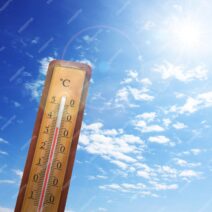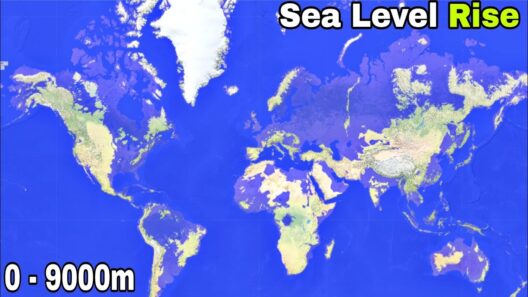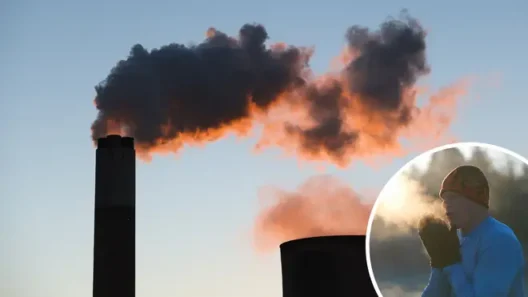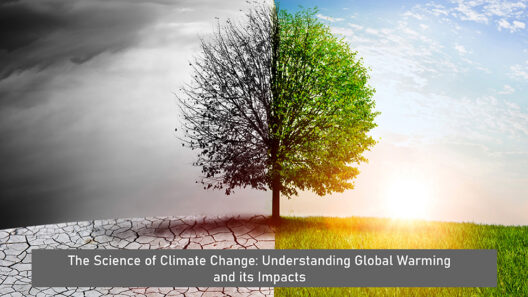The phenomenon of global warming has profound implications for the animal kingdom. The gradual increase in Earth’s average temperature, driven primarily by anthropogenic influences, is triggering a cascade of changes that affect wildlife in myriad ways. Understanding the ramifications of rising temperatures on animals is crucial for conservation efforts and for fostering a symbiotic relationship between humanity and nature.
As global temperatures continue to climb, ecosystems undergo significant alterations. This impacts animal species in their habitats, migration patterns, breeding behaviors, and ultimately, their survival. The following discussion will delve into the multifaceted impacts of global warming on animals, revealing the far-reaching consequences for wildlife across various ecosystems.
Effects on Habitat and Ecosystems
The habitats that sustain myriad species are increasingly destabilized by rising temperatures. One of the most immediate effects of global warming is the degradation of habitats such as forests, wetlands, and coral reefs. These ecosystems serve as critical shelters and resources for countless animals.
For instance, terrestrial habitats like forests are at risk of becoming more susceptible to pests and diseases. Warmer temperatures can enhance the reproduction rates of destructive insects. As these pests invade, species like trees face increased mortality, which in turn affects the diverse fauna that rely on these plants. The intricate food webs woven into these ecosystems are disrupted, leading to declining populations of species that are dependent on specific plants for nourishment.
Meanwhile, in aquatic ecosystems, rising sea temperatures lead to coral bleaching, a phenomenon that devastates marine biodiversity. Coral reefs serve as vital nurseries for many fish species and other marine organisms. When reefs bleach due to increased thermal stress, associated species face starvation and habitat loss. This creates a cascading effect, threatening both the ecological balance and the economic livelihoods of communities reliant on fishing and tourism.
Shifts in Migration Patterns
Adequate access to food and suitable breeding grounds are critical considerations for migratory animals. Global warming influences these factors by altering the availability of resources in their migratory paths. As climates shift, ecosystems transform, often leading migratory animals to reach traditional breeding or feeding grounds too late or too early.
For example, many bird species migrate in sync with the availability of food sources during specific seasons. If warming temperatures cause insects and plants to emerge earlier in spring, migratory birds may arrive too late to capitalize on those resources, jeopardizing their reproductive success. This misalignment between migration timing and food availability poses a serious threat to survival, impacting population dynamics and overall species resilience.
Disrupted Breeding Cycles
As temperature fluctuations become more pronounced, the breeding cycles of many animals also face profound disruption. Many species have adapted their reproductive mechanisms to synchronize with environmental cues such as temperature and daylight. However, if climatic conditions shift drastically, these cues can become unreliable.
For instance, amphibians like frogs are particularly sensitive to temperature changes, which can affect their breeding habits and the timing of their life cycles. Changes in precipitation patterns and warm temperatures can lead to alterations in breeding habitats, affecting egg-laying success and tadpole survival rates. Consequently, shifts in breeding cycles can threaten population stability, leading some species towards the brink of extinction.
Species Vulnerability and Extinction Risk
Not all species are equally equipped to cope with the stressors induced by global warming. Animals already facing pressure from habitat loss, pollution, or other anthropogenic factors may find their situation exacerbated. For instance, polar bears are emblematic of the vulnerability experienced by certain species. Their reliance on sea ice for hunting seals—a primary food source—is threatened by rising temperatures. As ice melts, these apex predators are forced to travel greater distances in search of food, affecting their survival rates and that of their cubs.
Furthermore, many species with narrow ecological niches or limited ranges are at heightened risk of extinction. The unique adaptations of species such as the mountain pygmy-possum make them particularly susceptible to the effects of climate change; as their mountainous habitats warm, they may find themselves without suitable environments in which to thrive. The continuing loss of biodiversity attributable to climate pressures is a pressing global concern, emphasizing the need for effective conservation measures.
Conclusion: A Call to Action
The impacts of global warming on animals are far-reaching and complex, affecting habitats, migration, breeding cycles, and extinction risks. As stewards of the planet, it is imperative to recognize these challenges and work collectively towards mitigation and conservation. Raising awareness about the plight of wildlife due to climate change is essential for fostering proactive measures to protect global biodiversity. The time to act is now; we must protect both the animal kingdom and the intricate ecosystems they inhabit for future generations.








